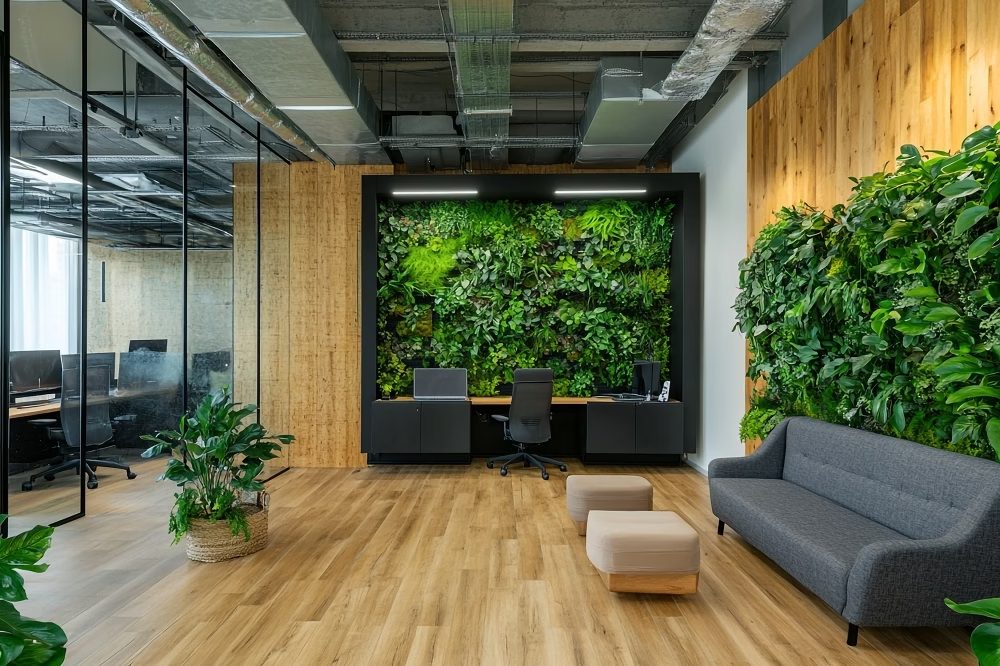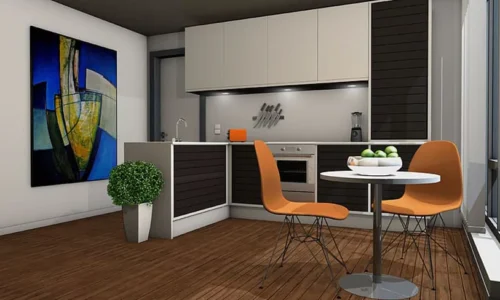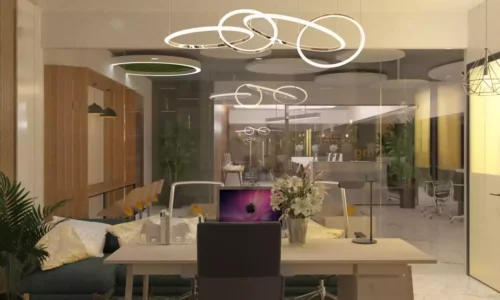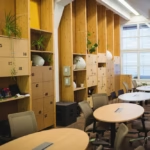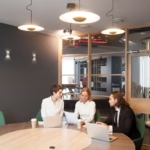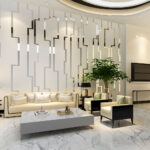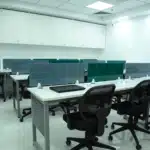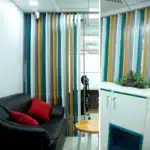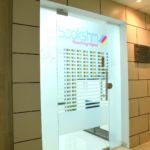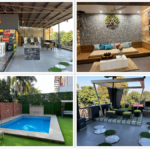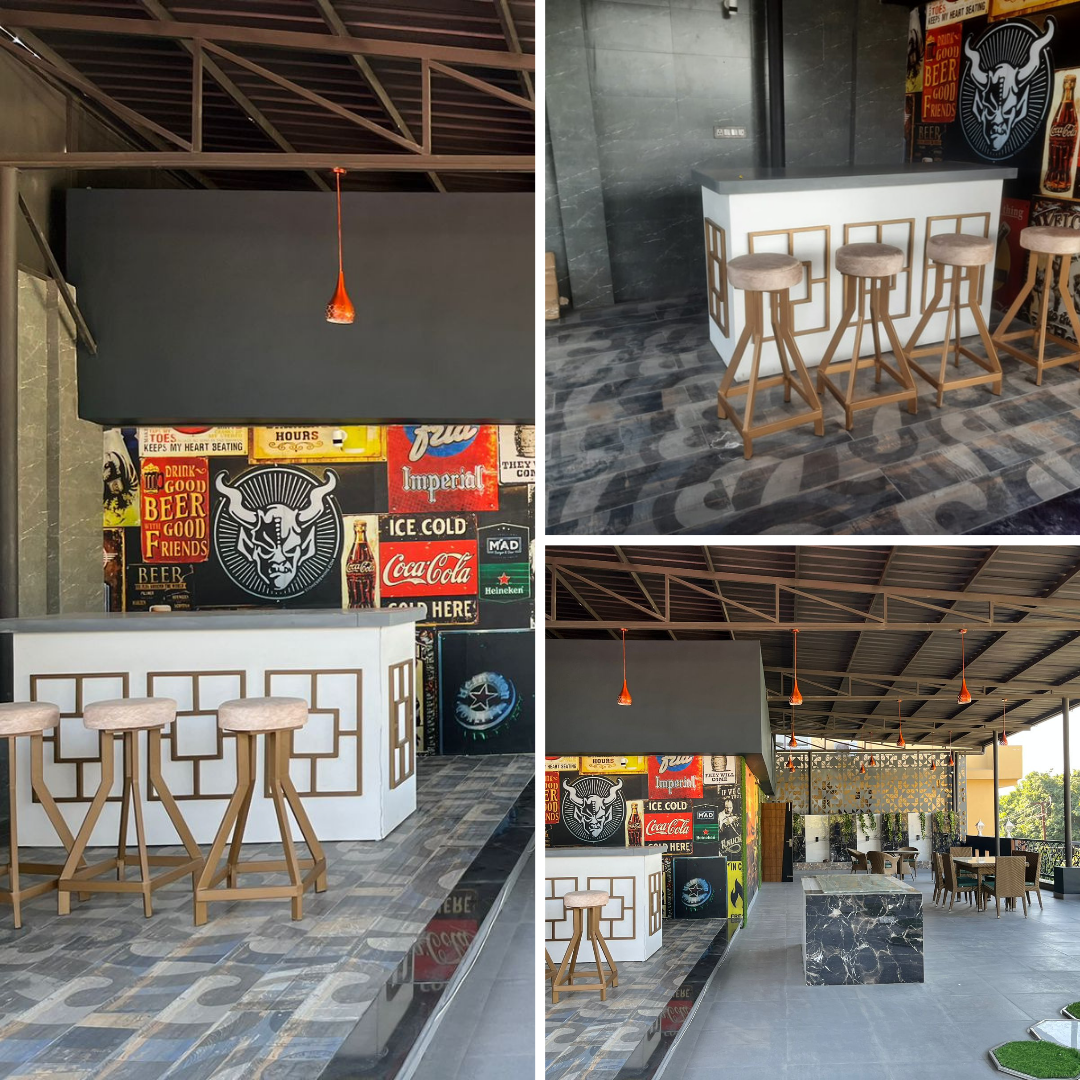Office design is no longer just about furniture, walls, and lighting. Companies are realizing that the environment in which employees work directly affects their mood, creativity, and productivity. One of the most effective ways to create healthier workplaces is by using biophilic design. This design style focuses on connecting people with nature inside the office. From natural lighting to indoor plants, biophilic design creates a balanced and inspiring workspace.
Below, we will explore how biophilic design improves office spaces, why it is becoming more popular, and what specific benefits it brings to employees and organizations.
What is Biophilic Design?
Biophilic design is an approach to architecture and interior design that incorporates elements of nature into indoor spaces. The idea comes from the term “biophilia,” which means the love of life or living systems. This concept was first popularized by biologist Edward O. Wilson, who explained that humans have a natural tendency to connect with nature.
In an office, biophilic design does not mean creating a forest inside a building. Instead, it focuses on simple but powerful methods like adding natural light, plants, water features, wood textures, and open spaces. Even views of the outdoors or nature-inspired artwork can be considered part of biophilic design.
This connection with nature has psychological and health benefits, making people feel calmer and more focused.
Why is Biophilic Design Important for Offices?
Most employees spend nearly one-third of their day inside an office. A traditional office space with artificial lighting, plain walls, and no natural elements can feel stressful, dull, and even harmful over time. Lack of exposure to natural light and greenery often leads to fatigue, anxiety, and reduced performance.
Biophilic design solves this problem by bringing nature indoors. It helps reduce stress, boosts creativity, and creates a workplace that supports both physical and mental well-being. Companies that invest in such designs not only improve employee satisfaction but also see long-term growth in productivity and employee retention.
Key Benefits of Biophilic Design in Office Spaces
Biophilic design brings multiple advantages to modern workplaces. Below are the most important ones:
1. Improves Employee Well-being
Natural light, greenery, and natural materials create a calm and positive environment. Exposure to plants and sunlight helps reduce stress and supports mental health. Employees in such spaces feel happier, healthier, and more engaged in their work.
2. Boosts Productivity
Research shows that employees working in biophilic-designed offices are more productive. Simple additions like daylight access, fresh air, and plants increase focus and reduce fatigue. A natural environment stimulates the brain and encourages innovative thinking.
3. Reduces Stress and Anxiety
Traditional offices with artificial lighting and no greenery can create a sense of pressure and fatigue. In contrast, biophilic offices use soft natural elements to lower stress levels. A calm environment leads to better emotional stability and improved teamwork.
4. Enhances Creativity
Creativity flourishes when people are inspired by their surroundings. Natural textures, living walls, and outdoor views trigger curiosity and encourage employees to think differently. Companies looking for innovation benefit greatly from biophilic designs.
5. Improves Air Quality
Plants naturally clean the air by removing toxins and increasing oxygen levels. Better air quality leads to fewer health issues like headaches, eye strain, and fatigue. This directly lowers employee absenteeism and improves overall workplace health.
Examples of Biophilic Design in Offices
To better understand how this design works, here are some common examples of biophilic design used in office spaces:
-
Large windows to allow natural light.
-
Indoor plants, vertical gardens, or “green walls.”
-
Use of natural materials like wood, stone, and bamboo in furniture and flooring.
-
Water features such as fountains or aquariums.
-
Open layouts with outdoor views.
-
Art or wallpaper inspired by nature.
These simple features create an inviting space that employees enjoy being in every day.
Comparison: Traditional Office vs. Biophilic Office
Here is a table that highlights the differences between a traditional office and one designed with biophilic elements:
| Feature | Traditional Office | Biophilic Office |
|---|---|---|
| Lighting | Artificial, fluorescent lights | Natural daylight, large windows |
| Air Quality | Stale, air-conditioned | Fresh, improved with plants |
| Walls & Furniture | Plain, synthetic materials | Natural wood, stone, and earthy textures |
| Atmosphere | Dull, uninspiring | Relaxing, lively, and engaging |
| Employee Health | Higher stress and fatigue | Reduced stress, improved mental health |
| Creativity & Innovation | Limited inspiration | Encourages new ideas and collaboration |
This table shows how biophilic design transforms a regular office into a healthier, more motivating space.
Biophilic Design and Employee Performance
Studies have found that offices with biophilic elements lead to fewer sick days, more engaged employees, and higher job satisfaction. A workplace filled with greenery and natural light makes people feel valued and connected.
A well-designed environment also supports cognitive functions such as concentration and memory. For companies, this translates into better performance, fewer mistakes, and stronger results. The design of a space plays a significant role in how people feel and perform.
Long-term Benefits for Businesses
Biophilic design is not just about aesthetics; it has long-term advantages for businesses. Here’s how:
-
Lower Absenteeism – Healthier environments reduce sick leave.
-
Higher Retention Rates – Employees are more likely to stay with a company that invests in their well-being.
-
Attracting Talent – Modern job seekers value companies that prioritize employee comfort and sustainability.
-
Energy Savings – Use of natural light reduces dependency on artificial lighting, lowering energy costs.
These benefits show that biophilic design is an investment rather than an expense.
Simple Steps to Add Biophilic Design in Offices
Companies do not need a complete renovation to apply biophilic design. Small steps can make a big difference:
-
Place indoor plants on desks, hallways, and corners.
-
Use natural colors like green, brown, and beige in office décor.
-
Open blinds and maximize daylight.
-
Add artwork or wallpapers with nature themes.
-
Introduce natural materials such as wood or stone in office furniture.
-
Create outdoor seating or garden areas if space allows.
These cost-effective methods can transform the atmosphere and boost overall productivity.
Future of Biophilic Design in Offices
As companies continue to adapt to changing work cultures, biophilic design will become even more important. With growing awareness about mental health and sustainability, businesses are shifting toward designs that are both eco-friendly and employee-friendly.
Offices of the future will likely combine technology with natural elements, creating balanced environments where people thrive. From smart lighting that mimics sunlight to indoor greenhouses, the future of biophilic design looks promising.
Also Read:
- What Is a Mood Board in Interior Design?
- What Is Modern Classic Interior Design?
- What is Green Interior Design?
- What Are the Different Materials Used for Interior Design?
- Is Interior Architecture the Same as Interior Design?
Conclusion
Biophilic design is more than just a trend—it is a necessity for modern workplaces. By connecting employees with nature, it improves health, reduces stress, increases creativity, and boosts productivity. Whether through plants, natural light, or eco-friendly materials, biophilic design transforms offices into spaces where people feel inspired and motivated.
Companies that adopt biophilic design are not just improving their interiors; they are investing in the well-being of their employees and the long-term success of their organization. In a world where work-life balance is essential, biophilic design offers the perfect solution for healthier and happier office spaces.


